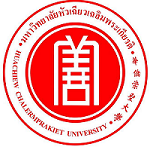Please use this identifier to cite or link to this item:
https://has.hcu.ac.th/jspui/handle/123456789/3487| Title: | การวิเคราะห์ความสัมพันธ์เชิงพื้นที่ของโรคเลปโตสไปโรสิสและความสัมพันธ์กับข้อมูลสำรวจระยะไกล ในประเทศไทย ปี พ.ศ.2556-2558 |
| Other Titles: | Spatial Analysis of Leptospirosis and Its Association with Remote Sensing Data in Thailand during 2013 to 2015 |
| Authors: | อมรรัตน์ ลือนาม Amornrat Luenam Huachiew Chalermprakiet University. Faculty of Public and Environmental Health |
| Keywords: | เลปโตสไปโรซิส -- ไทย Leptospirosis -- Thailand การวิเคราะห์ข้อมูลระยะไกล Remote sensing การวิเคราะห์เชิงพื้นที่ (สถิติ) Spatial analysis (Statistics) ระบบสารสนเทศทางภูมิศาสตร์ Geographic information systems |
| Issue Date: | 2020 |
| Publisher: | มหาวิทยาลัยหัวเฉียวเฉลิมพระเกียรติ |
| Abstract: | การวิจัยครั้งนี้มีวัตถุประสงค์ เพื่อศึกษาความสัมพันธ์ระหว่างค่าเฉลี่ยความหนาแน่นของระดับความสว่างของแสงไฟในเวลากลางคืน ปริมาณน้ำฝน และระดับความสูง-ต่ำของพื้นที่กับโรคเลปโตสไปโรสิส ในประเทศไทย และเพื่อศึกษาความสัมพันธ์เชิงพื้นที่แบบเฉพาะพื้นที่ของโรคเลปโตสไปโรสิส ในประเทศไทย ข้อมูลที่ใช้ในการวิจัยครั้งนี้จากฐานข้อมูลอัตราป่วยโรคเลปโตสไปโรสิสต่อแสน ประชากร จากรายงานโรคระบบเฝ้าระวัง (รายงาน 506) ของสํานักระบาดวิทยา กรมควบคุมโรค กระทรวงสาธารณสุข ปี พ.ศ. 2556 ถึง ปี พ.ศ. 2558 ทั้งหมด 77 จังหวัด จํานวน 7,495 ราย และข้อมูลสํารวจระยะไกล จากภาพถ่ายดาวเทียม ได้แก่ ค่าเฉลี่ยความหนาแน่นของระดับความสว่างของแสงไฟในเวลากลางคืนบริเวณประเทศไทย ข้อมูลเฉลี่ยความสูง-ต่ําของพื้นที่ และค่าเฉลี่ยปริมาณน้ําฝน เป็นการวิเคราะห์โดยใช้แบบจําลองสมการถดถอยพาเนลด้วยการประมาณค่าแบบสุ่ม เพื่อระบุความสัมพันธ์ระหว่างข้อมูลสํารวจระยะไกลกับโรคเลปโตสไปโรสิส และการวิเคราะห์อัตสหสัมพันธ์เชิงพื้นที่ระดับเฉพาะพื้นที่เพื่อพิจารณาความสัมพันธ์เชิงพื้นที่ ผลจากแบบจําลองสมการถดถอยพาเนลด้วยการประมาณค่าแบบสุ่ม พบว่า ค่าเฉลี่ยความหนาแน่นของระดับความสว่างของแสงไฟในเวลากลางคืน ปริมาณน้ำฝน และความสูง-ต่ำของพื้นที่เป็นปัจจัยทํานายการเกิดโรคเลปโตสไปโรสิส โดยระดับความสว่างของแสงไฟในเวลากลางคืนมีความสัมพันธ์กับการเกิดโรคเลปโตสไปโรสิสสูงสุด รองลงมาคือปริมาณน้ําฝน และความสูง-ต่ําของพื้นที่ตามลําดับ ผลจากการวิเคราะห์เชิงพื้นที่แบบเฉพาะพื้นที่ พบว่า จังหวัดที่มีการกระจุกตัวอัตราป่วยโรคเลปโตสไปโรสิสที่สูงหรือพื้นที่เสี่ยง ปี พ. ศ. 2556 โดยมีระดับสีแดง ได้แก่ จังหวัดอุบลราชธานี ศรีสะเกษ สุรินทร์ ระนอง สุราษฎร์ธานี และกระบี่ ในขณะที่ ปี พ. ศ. 2557 ได้แก่ จังหวัดอุบลราชธานี ศรีสะเกษ สุรินทร์ ร้อยเอ็ด ระนอง กระบี่ และตรัง สําหรับ ปีพ. ศ. 2558 ได้แก่ จังหวัดอุบลราชธานี ศรีสะเกษ สุรินทร์ ร้อยเอ็ด มหาสารคาม สุราษฎร์ธานี กระบี่ และตรัง การวิจัยครั้งนี้แสดงให้เห็นว่า ข้อมูลสํารวจระยะไกลสามารถนําไปใช้กับแบบจําลองการถดถอยแบบพาเนลเพื่อการคาดการณ์อุบัติการณ์โรคเลปโตสไปโรสิส และข้อมูลสํารวจระยะไกลยังสามารถระบุพื้นที่เสี่ยงของโรคเลปโตสไปโรสิสในประเทศไทย สามารถนําไปประยุกต์ใช้ในการวิจัยด้านสาธารณสุขในอนาคตได้ This study aimed to investigate the association of remote sensing data, such as nighttime light (NTL), rainfall, and elevation, with the incidence of leptospirosis for establishing prediction models. Another goal is to apply Local Indicators of Spatial Association (LISA) statistics to examine the spatial patterns of leptospirosis in Thailand. This work analyzed the nationwide 7,495 confirmed leptospirosis cases reported during 2013–2015. The data were used from the Bureau of Epidemiology, Department of Disease Control, Ministry of Public Health (MOPH). Monthly remote sensing data such as rainfall, NTL, and elevation were extracted from satellite databases. Panel regression models with random-effect specification was used to investigate the association between remote sensing data and the incidence of leptospirosis. LISA statistics was also applied to detect the spatial patterns of leptospirosis. Panel regression models with random-effect revealed that remote sensing data possessed statistically significant contribution in predicting leptospirosis. The highest association in 3 years was observed for rainfall, followed by nighttime-light density and elevation. All results obtained from LISA statistics indicated the localized univariate were hotspots in Ubon Ratchathani, Sisaket, Surin, Ranong, Surat Thani, and Krabi provinces in 2013, whereas in 2014, leptospirosis were hotspots located in Ubon Ratchathani, Sisaket, Surin, Roi Et, Ranong, Krabi, and Trang provinces, while in 2015, leptospirosis were hotspots located in Ubon Ratchathani, Sisaket, Surin, Roi Et, Maha Sarakham, Surat Thani, Krabi, and Trang provinces. All obtained outcomes indicate that remote sensing data can be applied to panel regression models for incidence prediction, and these indicators can also identify the spatial concentration of leptospirosis in Thailand. |
| URI: | https://has.hcu.ac.th/jspui/handle/123456789/3487 |
| Appears in Collections: | Public and Environmental Health - Research Reports |
Files in This Item:
| File | Description | Size | Format | |
|---|---|---|---|---|
| Spatial-Analysis-of-Leptospirosis-and-Its-Association-with-Remote-Sensing-Data.pdf | 1.56 MB | Adobe PDF | View/Open |
Items in DSpace are protected by copyright, with all rights reserved, unless otherwise indicated.
